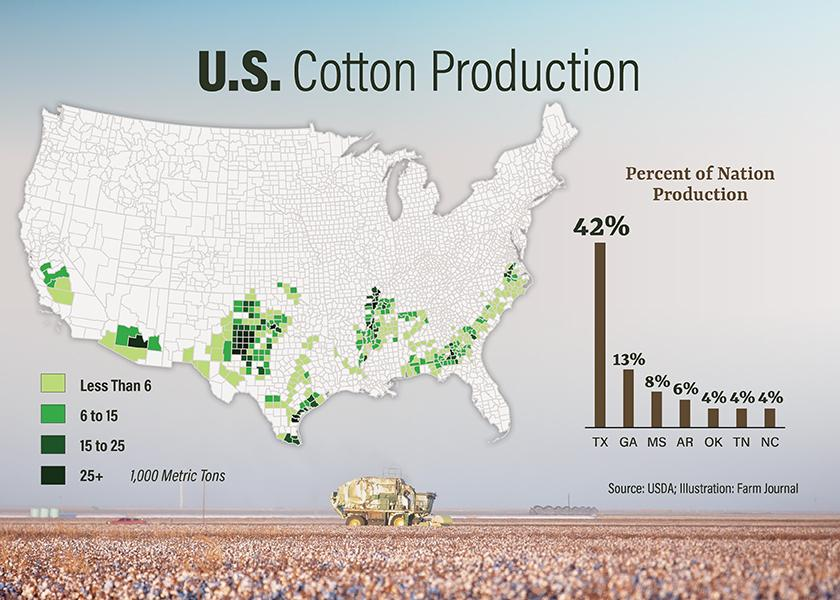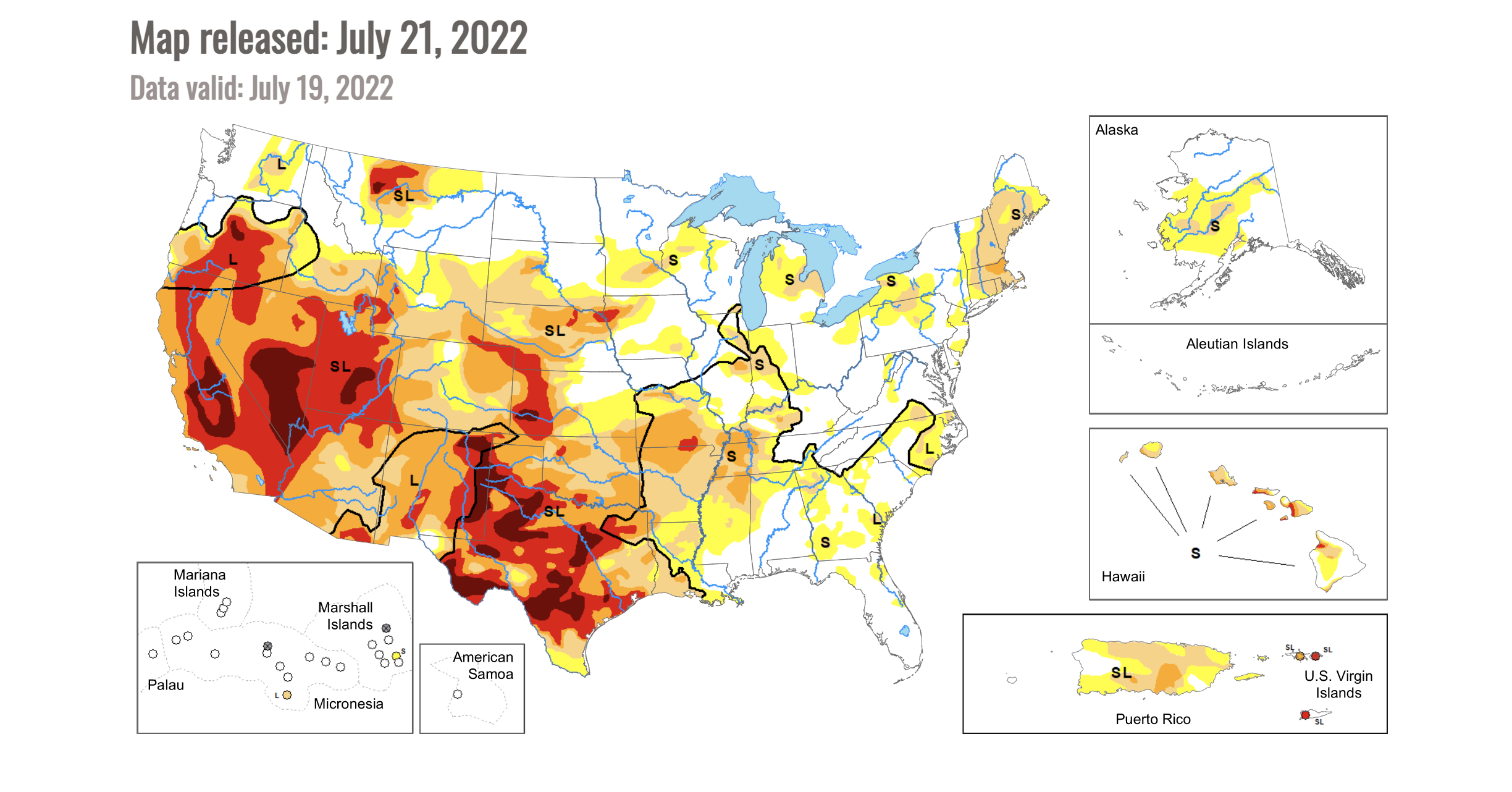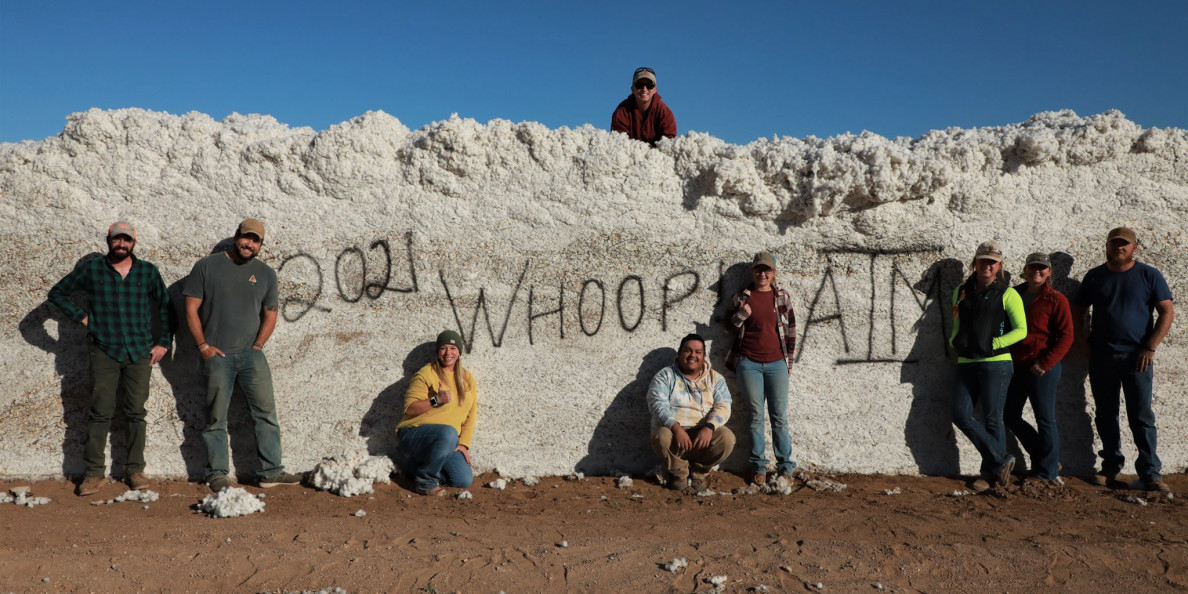By TYNE MORGAN

Nearly 57% of Texas is in extreme drought, and with the most severe level of it parked over West Texas and the Texas Panhandle, the drought is starting to rob even irrigated cotton fields of a crop.
USDA's supply and demand report earlier this month showed higher cotton abandonment due to deepening drought in Texas. The harvested area is to be nearly 600,000 acres less - or 32% abandonment - which is the third-highest on record.

The last time Texas saw cotton production forecasts so bleak was in the drought of 2011. Then, multiple days of triple-digit heat, combined with deepening drought, pushed abandonment to a record 36%. This year, the situation for farmers around Lubbock is worse, as the drought started earlier, and now the consecutive days of temperatures in the triple digits, along with no rain, is creating historically dry conditions.
“The biggest problem in West Texas is there's absolutely nothing to fall back on,” says Brad Rippey, USDA meteorologist. “There's no subsoil moisture. Or there’s very little topsoil moisture. And so with each day of triple-digit heat continuing to add insult to injury, we've got more than 70% of the U.S. cotton crop considered to be in a drought area right now."
The West Texas area is critical for cotton production. USDA shows Texas growers produce 42% of the country’s cotton. The area surrounding Lubbock, Texas, is known as the largest cotton patch in the U.S. And the majority of the cotton crop currently seeing extreme drought conditions is in that key cotton production area.
John Robinson, a Texas A&M economist and Extension specialist for cotton marketing, also expects USDA’s abandonment forecast to grow due to the drought situation around Lubbock. But he says the entire state's crop isn't as bad as 2011.
“As bad of a start as the crop had, and as bad as the weather rain forecast looks going forward, it wouldn't surprise me at all for USDA to bump it up, for the actual abandonment rate to climb from here,” he says. “Whether it'll exceed 36% is anybody's guess. But this is one of those historically very bad years.”
“Many producers are struggling to keep up with irrigation requirements for corn and cotton. There’s already corn being abandoned in the northwest Panhandle. Irrigated corn in the eastern Panhandle looks good, but corn south of Amarillo and toward Hereford is struggling.”
Cotton Price Conundrum
Despite the expectation for the loss of acres to grow in a key cotton production area, cotton prices continue to fall. December prices fell to 91 cents on Thursday.
“It doesn't seem as if fundamentals matter, compared to where we were a month or two ago,” says Robinson. “Now, the other way to look at that is we were in a period of exceptionally high prices in the last year and a half. And frankly, fundamentals didn't justify prices going over $1 or over $1.20. They got to $1.50 something, the new crop got to $1.30.”
Robinson said the run-up in prices over the past year is attributed to pandemic recovery and the amount of economic activity generated from consumers continuing to buy clothes and other cotton-based goods.
“But I can't explain anything that's happened in the last few weeks,” he says. “I mean, it dropped 30 cents in two weeks, and 30 cents in a drought just shocks me. I don't know how to explain it.”


